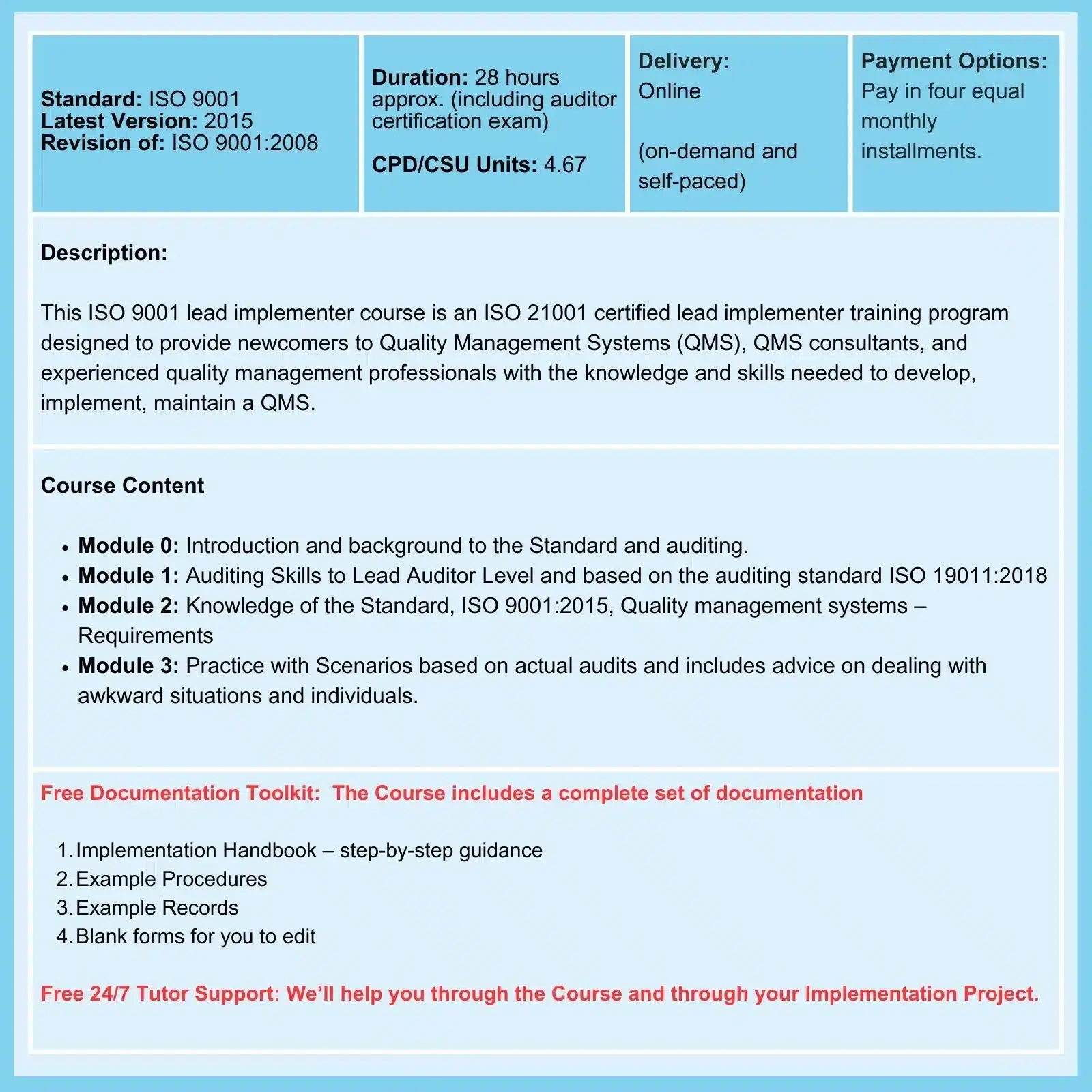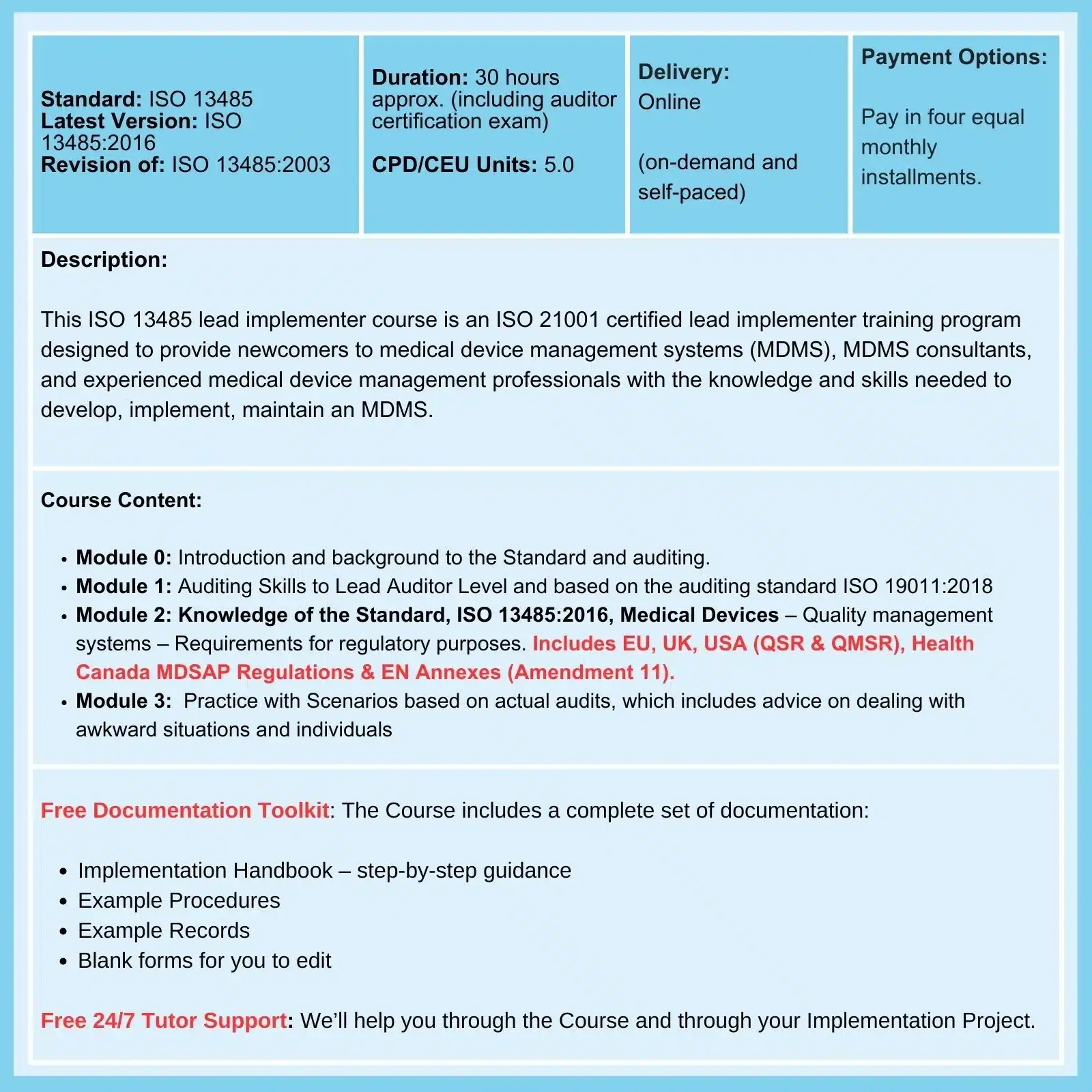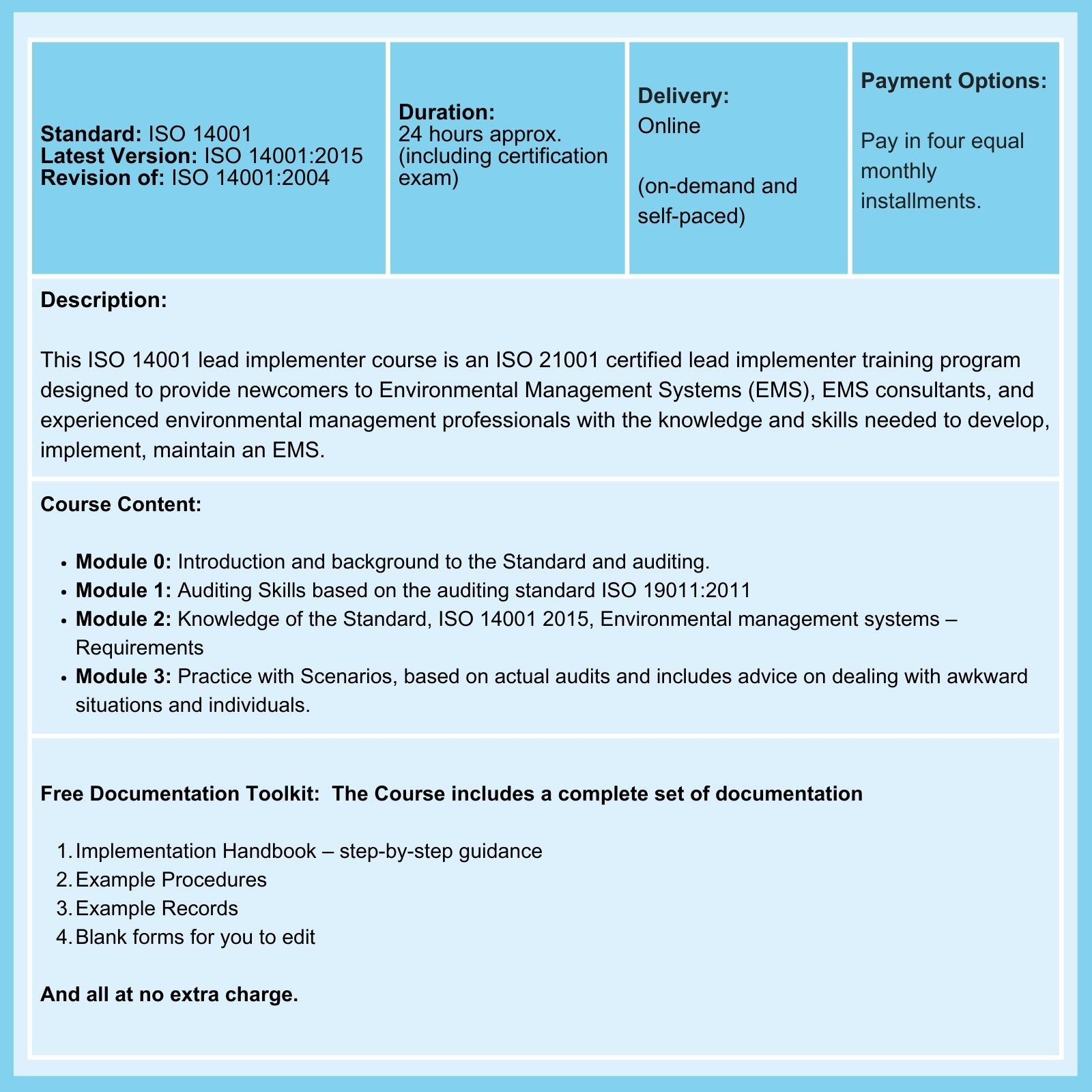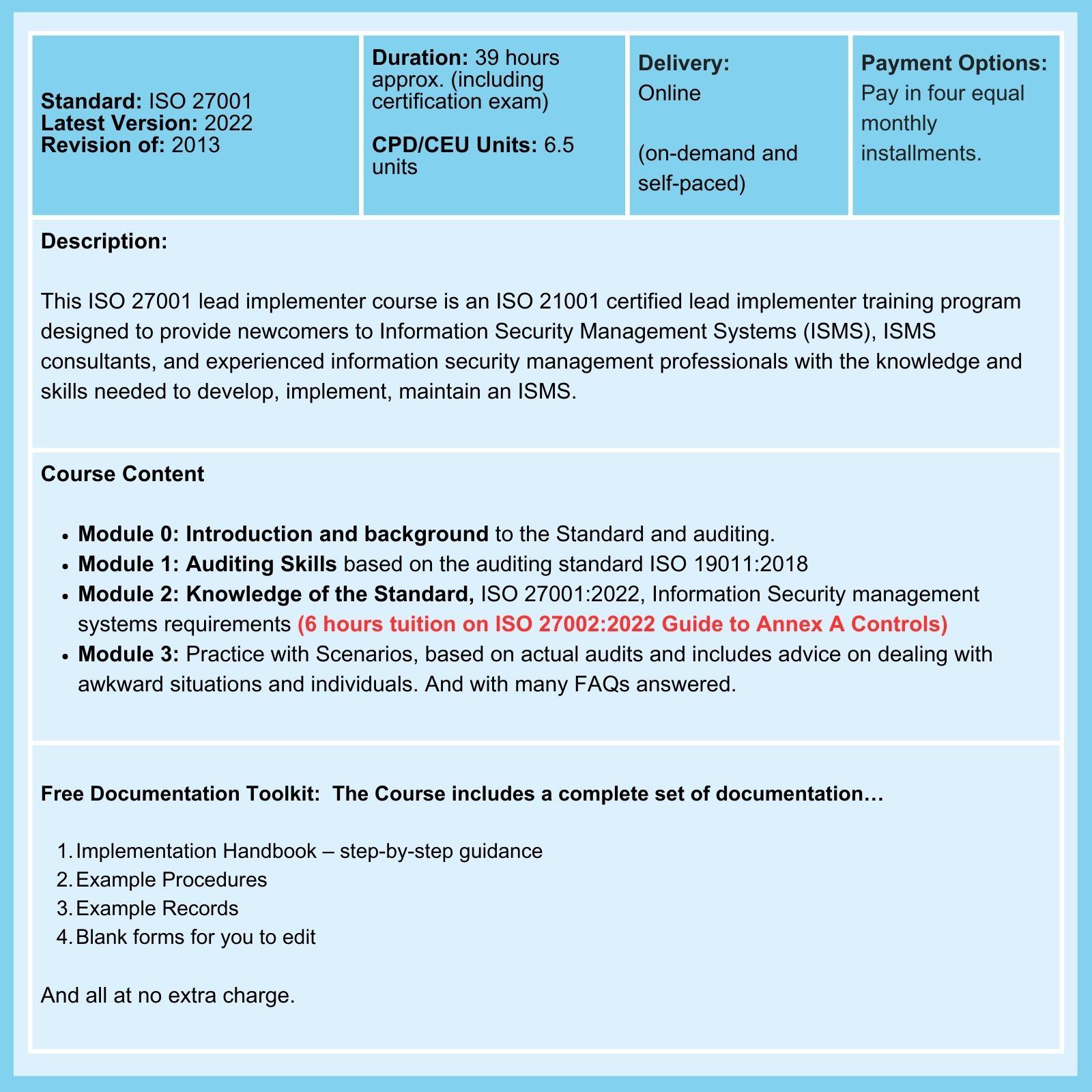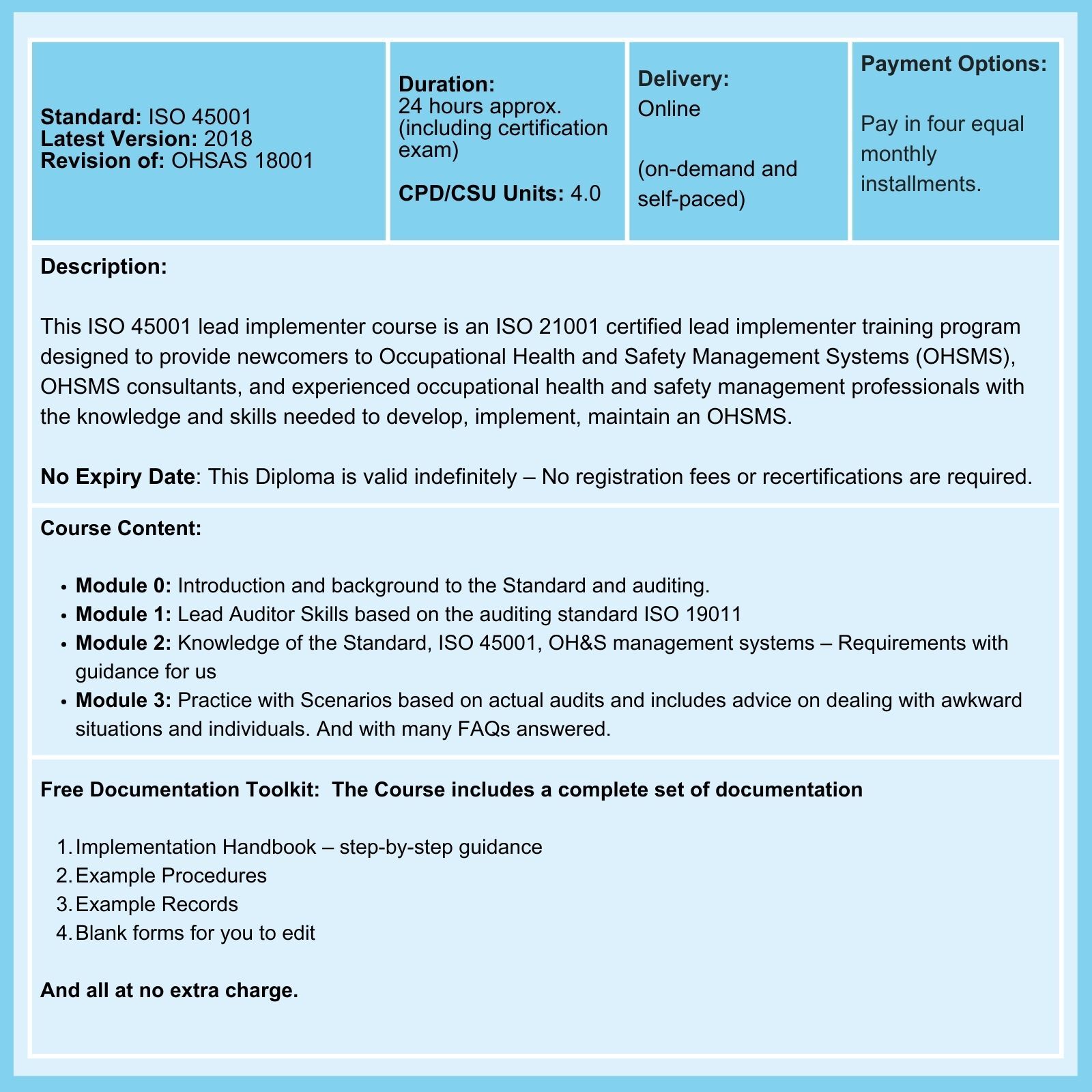
The 12-step ISO Certification process is explained. Once your ISO Management System (ISO 9001, ISO 13485, ISO 27001, etc.) has been implemented, what are the next steps to achieving certification? Where does the Certification Body fit in
Even though we're not a certification body, the deGRANDSON Global business primarily provides ISO training for auditors, so we'd like to give you a quick overview of how to get ISO certification for your quality or other management system.
Table of Contents
- ISO Certification Process Overview
- 12-Step ISO Certification Process
- Download the ISO Certification Process Infographic
- ISO 9001 Implementation Learning Materials
ISO Certification Process Overview
To obtain an ISO Certificate for your organization, you will need to engage the services of a Certification Body and go through an ISO Certification Process.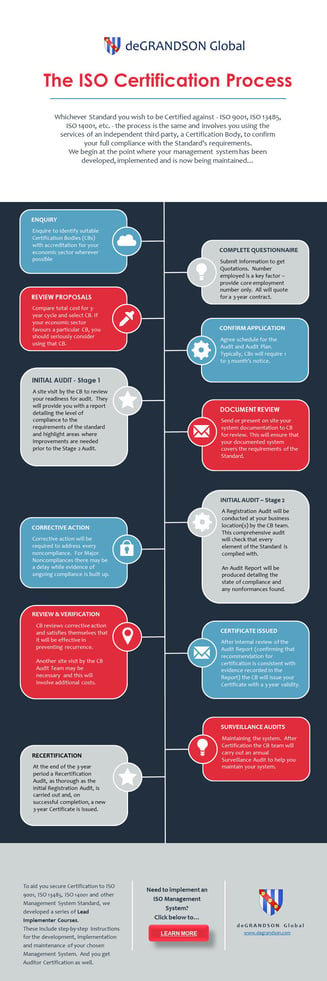
Our infographic - click image to get a copy - will take you through that process and answer some frequently asked questions, including:
- What is the nature of the ISO 9001 certification process?
- Are all Certification Bodies the same?
- How many steps are involved?
- How long will our ISO 9001 Certification last?
- How often will we be audited?
- Is the ISO 9001 certification process different from other ISO management system standards?
To begin answering these questions, we have prepared a flowchart taking you through the steps involved in the ISO Certification Process.
The process is the same whichever Standard you wish to be certified against - ISO 9001, ISO 13485, ISO 14001, ISO 27001, ISO 45001, etc.. It involves using the services of an independent third party, a Certification Body, to confirm your full compliance with the requirements.
12-Step ISO Certification Process
We begin at the point where your management system has been developed and implemented and is now being maintained. The infographic then takes you through the 12 steps, with hints and tips to ease your journey. Enjoy!
1. Inquiry
Identify suitable Certification Bodies (CBs) with accreditation for your economic sector wherever possible.
2. Completion of Questionnaires
Submit information to get quotations. The number of employees is a key factor; however, provide core employment numbers only. All will quote for a three-year contract.
Click on the image to get a copy
3. Review of Proposals
Compare the total cost for a three-year cycle and select a Certification Body. If the specific economic sector where your business operates favors a particular certification body, you should seriously consider that CB.
4. Confirmation of Application
Agree on a schedule for the audit and the audit plan. Typically, certification bodies will require one to three months' notice.
5. Initial Audit - Stage 1
The certification body will conduct a site visit to review your readiness for the audit. They will provide you with a report detailing the level of compliance with the requirements of the Standard. They will also highlight areas where improvements are needed before proceeding to the Stage 2 Audit.
6. Document Review
Send a copy or a link to your management system documentation to the Certification Body for review. This will ensure that your documented system covers the requirements of the Standard.
7. Initial Audit - Stage 2
A Registration Audit will be conducted at your business location(s) by the Certification Body team. This comprehensive audit will check that every element of the Standard is complied with. An Audit Report will be produced detailing the state of compliance and any nonconformances found.
8. Corrective Action
Corrective action will be required to address every noncompliance. There may be a delay for major noncompliances while evidence of ongoing compliance is built up.
9. Review and Verification
The Certification Body will review corrective action to ensure that they are satisfied that they will be effective in preventing the recurrence of noncompliance to standards.
Another site visit by the CB Audit Team may be necessary, involving additional costs.
10. Issuance of Certification
After the internal review of the Audit Report to confirm that the recommendation for certification is consistent with evidence recorded in the Report, the Certification Body will issue your Certificate with 3-year validity.
11. Surveillance Audits
After certification, the Certification Body Team will conduct annual surveillance audits to help you maintain your system.
12. Recertification
At the end of the three years, a Recertification Audit that is as thorough as the Initial Registration Audit is carried out. Upon successful completion, a new three-year certificate is issued.
Download the ISO Certification Process Infographic
Want to keep a handy copy of the ISO Certification Process for the office? Download the flowchart for free. Just click on the image above.
.ISO 9001 Implementation Learning Materials
To get started with ISO 9001 implementation, consider...
- Our ISO 9001:2015 Lead Implementer Course, with its 100+ page Implementation Handbook,
- Our ISO 9001 Training and Certification Overview page, and
- Our Blog 'ISO 9001:2015 and Risk-based Thinking - some practical advice'.You might want to check out the other lead implementer courses we also offer online for other standards.
Related Courses
Related Articles
- ISO Accreditation vs ISO Certification: Which Do You Need?
- ISO 13485 Certification Process: How and What to Prepare
- How to Implement ISO 14001: A 29-Step Guide (PDF file attached)
- Implement ISO 45001 yourself: it's easy with our 24/7 Tutor Support
- Implement ISO 27001 yourself: it's easy with our 24/7 Tutor Support
deGRANDSON Global is an ISO Certified Educational Organization
We have chosen ISO 21001 certification because it is based on independent third-party assessment, unlike IRCA and Exemplar badges (which we believe are commercially compromised). It is a 'university grade' standard used globally by schools, colleges, and universities to demonstrate competence.
We provide on-demand, self-paced Courses in ISO 9001, ISO 13481, ISO 14001, ISO 17025, ISO 27001, ISO 45001, Risk Management, Data Protection, and more.

